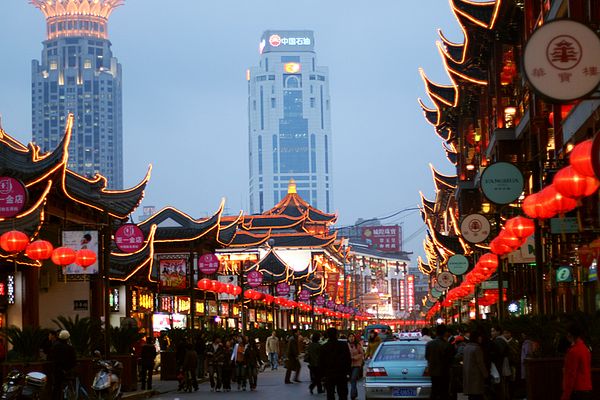China’s 45-year journey of reform and opening-up stands as a testament to its unique economic development strategy. Over these decades, ChVVhis dedication promises to spur high-quality domestic economic growth and bolster trade cooperation with countries, including the USA. The tangible success of China’s reform agenda underscores its significant role in global economic governance.
China’s robust economic expansion, initiated in 1978 with a shift from state-led development to marketization, and its subsequent entry into the World Trade Organization, highlight the efficacy of broadening economic choices. By embracing both internal and external trade, China has demonstrated that diversification and openness are key to sustained economic success. This strategic approach continues to yield dividends, reinforcing China’s position as a cornerstone of global economic progress.
This evolution of China’s economic landscape underscores a significant shift in global economic power. The expanding middle class and increasing number of affluent individuals are reshaping consumption patterns, creating opportunities for international businesses, and reinforcing China’s pivotal role in the global economy. The interplay of domestic growth and international integration denotes the dynamic nature of China’s ongoing economic transformation. As China continues on its path to modernization, its role in shaping a cooperative and interconnected global economy has become increasingly significant. This vision of openness and reform is paving the way for a future where China’s contributions to global prosperity are both profound and enduring.
This strategy has proven to be a winning formula, reinforcing the notion that economic openness is a cornerstone of sustained growth and global stability. The consistent impact of China’s reform agenda is evident in the stability it brings to global economic governance. Over the past 45 years, China has transformed its economic landscape through reform and opening-up. The journey began with a shift from a resource mobilization-focused infrastructure system to a consumption-driven economy, centered on processing and manufacturing.
By leveraging these resources, China harnessed two critical engines of economic development – productivity and consumption. This dual focus has been instrumental in propelling China’s economic ascent. Since the inception of reform and opening-up, China’s economy has witnessed substantial growth. This journey began by unlocking the productivity potential of rural areas, eventually expanding to urban centres and integrating foreign trade resources. This strategic evolution has not only spurred domestic economic momentum but also positioned China as a central player in the global economy.
China’s strategic transition facilitated a dynamic and adaptable economy, capable of sustaining growth amidst global economic fluctuations. The ability to mobilize resources efficiently and expand consumer markets has positioned China as a formidable player in the global economic arena. This shift towards a consumption-driven model has effectively mobilized China’s economic forces.
This remarkable trajectory reflects the dynamic nature of China’s economic policy and its ability to adapt to changing global landscapes. In an era marked by unprecedented global changes, China has embraced a series of comprehensive measures to invigorate institutional vitality, enterprise dynamism and social creativity. In 1978, China’s trade volume was a modest $20.64 billion, representing just 0.77 percent of global trade. Today, China stands as the world’s largest trading nation and the leading export market for over 70 countries and regions. This transformation underscores China’s pivotal role in the global economy and its continuous journey toward modernization and prosperity.
In the past two decades, China’s economic growth has been nothing short of extraordinary. From 2012 to 2021, China’s GDP surged from 53.9 trillion yuan (approximately $7.61 trillion) to an impressive 114.4 trillion yuan. Averaging an annual growth rate of 6.6 percent from 2013 to 2021, China outpaced the global average of 2.6 percent. According to World Bank data, China’s contribution to global economic growth during this period was a remarkable 38.6 percent, surpassing the combined contribution of the Group of Seven countries. By the end of 2023, China boasted an impressive 184 million registered business entities, with over 53 million private enterprises.
From 2012 to 2023, China’s total R&D investment soared from 1.03 trillion yuan ($141.7 billion) to a remarkable 3.3 trillion yuan. This investment now accounts for 2.64 percent of the country’s GDP, surpassing the European Union’s average. These efforts have significantly advanced China’s status as an innovative country, showcasing remarkable results in technological and scientific development. This surge in business activity and research investment underscores China’s commitment to fostering a vibrant economic environment.
By promoting deep reform and high-level opening-up, China has contributed its unique insights and solutions to global economic cooperation. The Chinese path to modernization, focused on robust economic growth and effective policy execution, has delivered extraordinary results. China’s governance system and development model highlight the remarkable potential the nation possesses as it pursues its development and modernization goals. A key element of China’s modernization strategy is its commitment to high-standard opening-up. This approach is epitomized by initiatives like the Belt and Road Forum for International Cooperation and the China International Import Expo. These events underscore China’s deepening integration with the global community and its dedication to fostering mutual economic interests. China’s increasing investment in global development and cooperation reflects its proactive role in shaping a more interconnected world. This strategic approach not only bolsters China’s own development but also enhances global economic stability.
This rapid economic expansion has coincided with significant strides in poverty alleviation. Between 2012 and 2021, China’s impoverished population, defined as individuals living on less than $1 per day, decreased by 147 million, accounting for 84.5 percent of the total reduction in poverty across East Asia.
A pivotal factor in China’s economic success has been foreign direct investment (FDI), which has fueled innovation and technological advancements. The establishment of four Special Economic Zones (SEZs) in 1980 – Shenzhen, Zhuhai, Shantou, and Xiamen – played a crucial role in this process. These SEZs – which have now been increased to seven – with their favourable policies. including tax incentives and reduced regulations, attracted substantial foreign investment and guided national economic development. Special Economic Zones (SEZs) have significantly bolstered China’s economic landscape, contributing 22% of China’s GDP and accounting for 45% of total foreign direct investment. They have also been pivotal in driving exports, making up 60% of the country’s total. SEZs are credited with creating over 30 million jobs, increasing farmers’ incomes by 30%, and accelerating the processes of industrialization, agricultural modernization, and urbanization. In addition to 7 SE.Zs, China has also established 21 Free Trade Zones (FTZs) and a network of Free Trade Ports (FTPs), which are also making huge impact on Chinese economy by attracting foreign businesses and invstement. In 2023, China attracted foreign direct investment (FDI) inflows totaling approximately $163.25 billion.
The sweeping reforms in China have brought about a remarkable transformation, notably the rise of a substantial middle class and a surge in consumption power. As millions of Chinese citizens ascend into the middle-income bracket, the demand for high-quality goods and services has increased. This growing consumer class not only drives domestic economic growth but also presents a lucrative market for global businesses.
Major international companies are now tailoring their products and marketing strategies to meet the preferences of Chinese consumers, further embedding China into the global economic framework. By 2030, China is expected to host approximately 400 million households with upper-middle and higher incomes comparable to the combined figures of Europe and the USA, according to McKinsey. This dramatic increase signifies the immense potential of the Chinese market. Over the next five years, McKinsey estimates that the number of millionaires in China could double, rising from around five million today to ten million by 2025.
This evolution of China’s economic landscape underscores a significant shift in global economic power. The expanding middle class and increasing number of affluent individuals are reshaping consumption patterns, creating opportunities for international businesses, and reinforcing China’s pivotal role in the global economy. The interplay of domestic growth and international integration denotes the dynamic nature of China’s ongoing economic transformation. As China continues on its path to modernization, its role in shaping a cooperative and interconnected global economy has become increasingly significant. This vision of openness and reform is paving the way for a future where China’s contributions to global prosperity are both profound and enduring.























